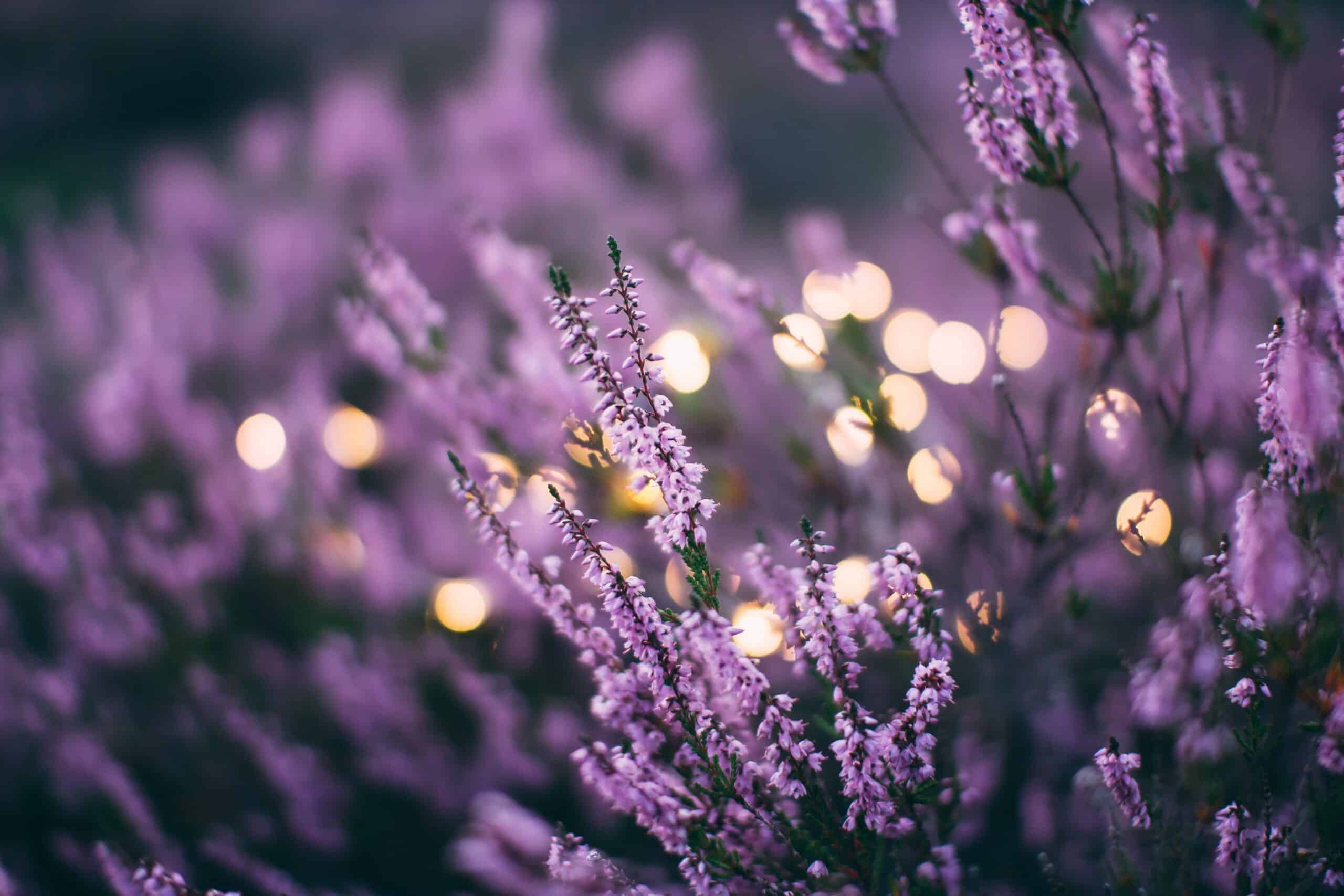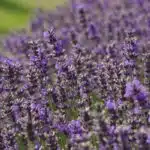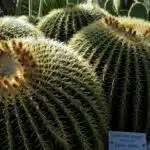Have you ever wanted to bring the beauty of a lavender field indoors? It’s now possible with a pot of lavender on your windowsill or balcony! Growing lavender indoors is an easy and rewarding task, allowing you to enjoy the sweet scent of these purple blooms in your own home. Picture yourself strolling through a lush meadow, surrounded by a sea of soft lilac blooms. With a little bit of effort, you can recreate this idyllic scene in the comfort of your own living room.
Whether you’re looking for a natural air freshener or want to add some freshness to your decor, growing lavender indoors is an enjoyable way to get creative with your space. Lavender is an aromatic herb that thrives when potted and placed in sunny areas. Plus, it’s easy to care for and requires minimal maintenance—a perfect plant for busy individuals who don’t have much time for gardening!
In this article, we’ll guide you through everything you need to know about growing lavender indoors in pots. From buying the right kind of soil and selecting the ideal spot in your home to pruning and harvesting tips, we’ve got all the information you need to become an expert indoor gardener!
What You’ll Need To Grow Lavender Indoors
Lavender is a symbol of beauty, purity, and joy. Growing it indoors is an opportunity to bring these qualities into our homes and lives. With the right pot, soil, and care, you can have a thriving lavender plant in your space!
To get started on this endeavor, there are some essential items you’ll need. A container with drainage holes and adequate size for the plant’s root system is a must. The soil should be light and well-draining for best growth and health of the plant. A watering can or hose will help you keep the lavender appropriately moistened during its growing cycle. Additionally, if your indoor environment has low light levels, you may need to supplement with artificial lighting fixtures such as fluorescent bulbs to provide enough light for the plant to thrive.
Lastly, give your lavender plenty of attention and love! Prune it regularly and check it often to ensure that pests are not taking over its leaves or roots. Feed it organic fertilizer once per month during its growing season as well as any special treatments that may be needed depending on your specific climate. With proper care, your lavender will soon be flourishing in no time!
Choosing The Right Pot And Soil
As if building a house, the foundation of growing lavender indoors starts with the right pot and soil. Imagine a budding flower in the perfect environment, and you can see why choosing the right materials is so important. Picking the right potting mix is essential to create the ideal home for your lavender.
When selecting a pot for your lavender, you’ll want one with drainage holes on the bottom to prevent water from pooling. The material of the pot should preferably be clay or ceramic as they help regulate temperature better than plastic. Additionally, make sure that it’s large enough for your plant to grow freely without getting overcrowded.
The soil must also be of high quality, allowing air and water to pass through easily without becoming soggy or compacted. A good rule of thumb is to use a soil specifically designed for potted plants or a combination of 1/3 loam soil, 1/3 peat moss, and 1/3 sand or perlite. With these materials in place, your lavender will have an excellent chance at thriving indoors!
Understanding Lavender’s Preferred Growing Conditions
Growing lavender indoors requires understanding the plant’s preferred growing conditions. It needs sunlight, warmth, and well-drained soil. It also requires the right pot and soil in order to thrive.
When it comes to creating the perfect environment for your lavender, you must provide plenty of light and warmth. Place your container near a sunny window that receives at least six hours of sunlight each day. For best results, keep temperatures between 65°F and 75°F during the day and slightly cooler at night.
In addition to providing adequate sunlight and warmth, it is essential to use a pot with drainage holes that is filled with a well-drained soil mix. Lavender prefers light soils such as sandy loam or clay loam with good drainage so it doesn’t become waterlogged. Avoid using heavy soils or mixes containing large amounts of compost as they may retain too much moisture and can cause root rot in your plants. With these three elements in place, your lavender will be ready to be planted!
Planting Lavender Seeds Or Transplants
What if you could have a fragrant, colorful garden of lavender blooms in your living room? The potential of growing lavender indoors in pots is now within reach. But first, it’s important to understand how to plant the seeds or transplants for the best chance at success.
The key to planting lavender indoors is to choose a pot that is at least six inches deep and has good drainage. If you don’t have a pot with drainage holes, make sure to layer the bottom with stones or gravel before filling it with soil. Whether you are planting seeds or transplants, make sure to cover them lightly with soil and water them thoroughly after planting.
You may also want to add some fertilizer to the soil when planting lavender indoors. Choose a fertilizer that is specially formulated for herbs and use it according to package directions. With proper care, your indoor lavender plants should be ready to harvest within 8-10 weeks!
As you nurture your new lavender plants, you’ll need to provide them with consistent light, water, and nutrients — all of which will help ensure their growth and eventual flowering. With the right combination of these elements, your indoor garden can be full of fragrant blooms in no time!
How To Care For Lavender Plants
Caring for lavender plants is an important part of ensuring they thrive and provide you with the beautiful aromas you love. To do this, there are a few key steps you should follow.
First, make sure the pot where your lavender is planted has good drainage and use well-aerated soil that’s rich in organic matter. It’s also important to place your potted lavenders in a spot where they’ll get plenty of sunlight throughout the day. Additionally, when it comes to water, aim not to overwater but rather water deeply and on a regular basis.
Next, fertilize your lavender plants every once in awhile with a balanced fertilizer like 10-10-10 or 8-8-8 to help them develop strong root systems and flowers. Also, pruning or trimming back the lavender stems annually will help them stay healthy by removing any dead or damaged leaves or branches.
Following these steps can help ensure that your lavender plants stay healthy indoors year round.
How To Water Lavender Plants
Watering your lavender plants is one of the most important aspects of caring for them. As an example, let’s consider a potted lavender plant kept indoors. To keep this plant healthy, it needs to be watered correctly.
It’s best to water the lavender plant in the morning. This way, the soil has enough time to absorb the water before nightfall, and the leaves will be able to completely dry out by the following morning. When watering, make sure not to overdo it – if you see that some water is running off into the saucer beneath the pot, it’s a sign that you’ve watered too much.
When watering your lavender plant, also take care not to get any water on its leaves or flowers. Doing so can cause fungal diseases, which can harm its growth and health. Instead, focus on ensuring that only the soil gets dampened – a good tip is to insert your finger about two inches into the soil each time you’re about to water it; if it feels dry, go ahead and irrigate your plant. With these tips in mind, you can keep your lavender plant healthy by giving it just enough water without overwatering it or getting its leaves wet with water droplets. Now that we have covered how to water lavender plants properly, let’s move on and discuss fertilizing them for optimal growth and bloom production.
How To Fertilize Lavender Plants
Now that you know how to water your lavender plants, it’s time to learn about the next step – fertilizing. Fertilizing is an important part of lavender care as it helps ensure your plants stay healthy and strong. But when it comes to fertilizer, there are a few key things you should keep in mind.
First, don’t over-fertilize as too much can burn the roots of your lavender plants and damage them. It’s also important to use a balanced fertilizer with equal amounts of nitrogen, phosphorus, and potassium. This will help ensure your lavender gets all the nutrients it needs to grow healthy and strong.
Finally, be sure to fertilize your lavender plants every two weeks during the growing season for maximum benefit. If you’re using a slow-release fertilizer, then apply it once a month instead. With proper fertilization and watering practices, your lavender will thrive indoors in its pot—no matter what the season!
The next step in caring for your indoor lavender is learning how to prune it properly. Pruning is essential for keeping your plant healthy and looking good while also encouraging new growth.
Tips For Pruning Lavender Plants
Pruning is an important part of keeping your lavender plants healthy. By following the right steps, you can ensure that your lavender plants are getting the best care possible.
Start by removing any dead or damaged stems, as well as any flowering stems that have already died off. This will help to keep your plant looking its best and prevent disease from spreading. Next, trim away any branches that are growing in an uncontrolled manner. You should also shape the plant by cutting back all sides of it evenly to create a uniform look.
Finally, give your lavender plants some breathing room by thinning out overcrowded areas. Doing so will help promote air circulation and allow better access to light and water for each individual plant. It’s also important to remember that pruning encourages new growth, so don’t be afraid to cut back more than you think you need to! With a bit of care and attention, your lavender plants will soon be flourishing indoors in their pots. Now it’s time to move on to pest control for your lavender plants – another important step in caring for them effectively.
Pest Control For Your Lavender Plants
Pruning is important for maintaining your lavender plants, but so is pest control. To keep your lavender healthy and strong it’s important to take preventative measures against insects and disease. Here are some steps you can take to protect your lavender plants from pests.
First of all, check the plants regularly for any signs of damage or pest infestations. Look for wilted leaves, holes in the leaves, or discolored spots on the foliage. If you find any signs of pests, try to identify what kind of insect it is and then take steps to remove them. You can use an insecticidal soap spray or an insecticide specifically designed for the type of pest in question.
Secondly, make sure that your soil is well-drained and not overly moist. This will help prevent fungal diseases from developing in the soil which can attract pests such as aphids and whiteflies. Also be sure to keep the area around your lavender plants free from weeds which can provide a habitat for pests. Lastly, give your lavender plenty of sunlight as this will help deter some types of insects like spider mites that prefer shady areas.
By following these simple tips you can ensure that your lavender plants stay healthy and free from pests. With regular maintenance and vigilance, you’ll be able to enjoy an abundant crop of fragrant blooms year after year. The next step in caring for your lavender is learning how to harvest it properly so that you get the best quality product possible.
How To Harvest Lavender
Harvesting lavender is an important step in getting the most out of your indoor plants. It’s also a great way to use the fragrant, beneficial herb in cooking, medicine, and more. To get the best results, it’s important to know when and how to harvest your lavender correctly.
You’ll want to wait until at least two-thirds of your plant’s flower heads have opened before harvesting. This will ensure that you get the full benefit from the volatile oils in the flowers. When ready to harvest, cut off the stems just above a set of leaves with a pair of sharp scissors or shears. Be sure not to cut off any green parts of the stem that are still alive as this can cause damage to the plant.
After harvesting your lavender, it’s important to dry it properly for use and storage. This will help preserve its color and aroma for longer periods of time. Next, we will go over how to dry lavender for use and storage.
How To Dry Lavender For Use And Storage
Did you know that lavender is one of the most versatile herbs? It can be used for everything from aromatherapy to culinary applications. With this in mind, it’s no surprise that so many people are looking to learn how to dry lavender for use and storage.
Harvesting your lavender at the peak of its bloom will ensure you get the most fragrant and flavorful buds. Once you have picked your flowers, you should hang them upside down in a cool, dark place with good air circulation. Leave them there until they are completely dry; this usually takes a few days. After they have dried, you can store them in an airtight container or use them immediately for whatever purpose you choose.
If your lavender plants aren’t thriving as much as you want them to, don’t worry! There are plenty of things you can do to help improve their health and appearance. From adjusting their soil composition to pruning regularly, there are many ways to ensure that your lavender stays healthy and productive for years to come.
What To Do When Lavender Plants Don’t Thrive
Well, here we are: stuck in the stones of lavender land and our plants aren’t thriving. What a drag! It’s time to take action and figure out what can be done to get those luscious purple blooms back on track. To that end, let’s take a look at what should be done when lavender plants don’t seem to be doing well.
First things first: it’s important to assess the situation and identify any potential issues right away. Are your plants getting enough sunlight? Is the soil too dry or too wet? Is the temperature in the room suitable for growing lavender indoors? These are all questions that need answering before you can move forward with addressing any problems your lavender may have.
Next, it’s time to act on those answers. If your plants aren’t getting enough sunlight, then consider moving them closer to a window or investing in grow lights. If they’re in soil that is too dry or too wet, then adjust their water levels accordingly; if they’re not getting enough air circulation, then provide better ventilation by opening windows or adding fans. And if the temperature is still off, then consider purchasing a thermometer so you can make sure your lavender is happy and healthy at all times.
By taking these steps and paying close attention to your lavender plants’ needs, you should soon see an improvement in their health – which means it’ll be time for propagation!
How To Propagate Lavender Plants
Firstly, propagating lavender plants is a great way to save money and expand your collection of fragrant flowers. Lavender can be propagated by both seeds and cuttings, but cuttings are the most popular method. This involves taking a stem from an existing plant and placing it in water or soil for roots to develop. To ensure the success of the propagation process, make sure the cutting is at least 4 inches long and taken from a healthy parent plant.
The best time of year to propagate lavender is during its active growing season, which usually occurs during late spring or early summer. During this time, the parent plant should have plenty of new growth that can be used as cuttings. When taking the cutting from the parent plant, use pruning shears or scissors to make sure it’s cleanly cut from the stem.
Once you’ve taken your cutting, you’ll need to prepare a potting mixture for it. A mixture of one part perlite and one part peat moss makes an ideal medium for lavender plants because it allows for adequate drainage while still retaining some moisture. Then carefully place your cutting into the potting mix, making sure not to damage any roots that may be starting to form. Water lightly and keep in bright but indirect light until roots begin to form before transplanting into larger pots with fresh potting soil.
With all these steps in mind, propagating lavender is easier than it seems! Having patience and following these steps will ensure you have beautiful blooms that will last for years to come. Now that we’ve looked at how to propagate lavender plants, let’s explore some common problems with them next.
Common Problems With Lavender Plants
According to the National Gardening Association, lavender plants are the third most popular fragrant plants in the garden. This makes it no surprise that many people are attempting to grow lavender indoors in their own pots. However, common problems with lavender can arise and cause difficulties for home growers.
One of these issues is over-watering. Lavender does not like wet roots; therefore, it is important to make sure the soil isn’t soggy. Additionally, lavender needs plenty of light and should be placed near a window where it will get at least 6 hours of direct sunlight every day. Otherwise, the plant may become leggy as it stretches out towards the sun.
To ensure healthy growth, fertilize your lavender once a month during its growing season with a balanced fertilizer such as 10-10-10 or 20-20-20. The amount of fertilizer needed depends on the size of your pot and how much soil it contains, so read the instructions carefully before applying it to your potted lavender plant. To maximize success with growing lavender indoors, troubleshooting and prevention should be taken into consideration when dealing with any potential issues that might arise.
Troubleshooting And Prevention For Lavender Plants
When it comes to growing lavender indoors in pots, troubleshooting and prevention are key. This means being aware of the common problems that lavender plants can experience and taking steps to prevent them.
Common problems with lavender plants include fungal diseases such as powdery mildew, root rot, stem rot, and wilt. The best way to prevent these issues is by keeping the plant in a sunny spot with well-draining soil and providing enough air circulation around the plant. It’s also important to water the plant regularly so the soil doesn’t get too dry or too wet.
Other potential issues include pest infestations, over-fertilization, and improper pruning. To help avoid pest infestations, keep an eye out for signs of aphids or other bugs on your plant and take steps to remove them right away. Over-fertilizing should also be avoided because it can lead to an accumulation of salt in the soil that can damage the roots of your lavender plants. Lastly, when pruning your lavenders be sure to cut off any dead or damaged stems near the base of the plant so new growth can take place instead.
By following these tips for troubleshooting and prevention for lavender plants you can ensure that your indoor lavenders stay healthy and happy!
Frequently Asked Questions
How Often Should I Water Lavender Plants?
It’s a common dream to have lavender plants in our homes, their sweet scent and vibrant colors adding life to any environment. But how often should you water them? What precautions should you take?
We all want to know the best way to grow our beautiful lavender plants indoors, so we can enjoy their calming scent in the comfort of our own home. It might seem daunting at first, but with a few simple tips, your plants will be thriving in no time!
Watering your lavender plants is an important part of taking care of them. You should water them twice a week, making sure that the soil isn’t too dry or too wet. Be careful not to overwater as this can cause root rot and other issues. Ensure that the pot has drainage holes so that the excess water can escape. Lavender needs plenty of sunlight in order for it to thrive indoors, so make sure you place it near a window or use artificial light if necessary. Finally, fertilize your plant every two weeks with an organic fertilizer to give it the nutrients it needs for growth and bloom.
By following these tips, you’ll be well on your way towards having a healthy and happy lavender plant in your home! So get started today – you won’t regret it!
What Is The Best Type Of Soil For Growing Lavender Indoors In Pots?
When it comes to growing lavender indoors in pots, many people think they don’t have the right conditions to make it happen. But with the right soil, you can actually grow lavender successfully indoors in pots. So, what is the best type of soil for growing lavender indoors in pots?
The ideal soil for growing lavender indoors should be well-draining and contain plenty of organic matter. The soil should also have a slightly acidic pH level ranging between 6.5 and 7.5. For an even better result, mix sand or small stones into the soil for extra drainage and aeration. Doing this will ensure that the roots don’t get waterlogged, which can cause root rot or other problems.
To help your lavender thrive, you’ll also want to use a light potting mix that’s rich in nutrients like nitrogen and potassium. Adding slow-release fertilizer at planting time is also a good idea since it will provide your plants with food throughout the season. With these tips in mind, you’ll be able to create the perfect environment for growing lavender indoors in pots!
Can I Grow Lavender Indoors Year-Round?
It may seem counter-intuitive, but growing lavender indoors year-round is actually possible. Wouldn’t it be ironic if you could have the scent of lavender wafting through your living space all year long? Well, with a little bit of know-how and a few supplies, you can!
Growing lavender indoors requires a few key steps to ensure that the plant remains healthy and vibrant. First, you’ll need to find the right type of pot for your lavender plant. Make sure it’s large enough to support the plant’s growth and has proper drainage holes in the bottom. Additionally, pick up some potting soil specifically designed for indoor plants; this will provide them with optimal nutrient content and moisture levels throughout their lifecycle.
Finally, make sure that you give your lavender indoor plants plenty of bright light while they’re growing; this will help them bloom and stay healthy even when temperatures start to dip outside. With just a little bit of care, you can enjoy the fragrant scent of lavender all year round!
How Do I Know When To Harvest Lavender?
Flourishing fragrant lavender – an alluring aroma and captivating colour! Growing lavender indoors in pots can provide a tranquil touch to your home, but when do you know it’s time to harvest? Let’s explore the process of harvesting this magnificent plant.
Firstly, it is essential to be aware of the stages of growth for your lavender. Depending on the variety, they can take two to four months to mature and reach their peak flowering stage. When the buds are just beginning to form and open, with a hint of colour visible, they should be ready for harvesting. To ensure you do not miss out on the harvest season, it is best to keep an eye on them regularly.
Next, use scissors or pruning shears to cut stems at least four inches from the base of the plant. This will help promote further growth and healthier plants in general. For optimal quality, harvest during mid-morning when the oil content is highest, yet before temperatures reach midday heights as that can cause oils to evaporate quickly. After cutting your stems, hang them upside-down in a cool dry place as this allows air circulation which aids in drying without allowing moulds or mildews to form due to excess moisture levels.
It takes patience and practice when harvesting lavender indoors in pots – but with these simple steps you will soon be rewarded with lusciously aromatic bunches of freshly picked blooms!
Is There Any Way To Prevent Pests From Attacking My Lavender Plants?
When growing lavender indoors, one of the potential issues is pests. These pests can attack the lavender plants and cause damage that could reduce the quality and quantity of your crop. So, it’s important to take steps to ensure your lavender plants are protected from these unwelcome visitors.
Fortunately, there are several ways to keep pests away from your lavender plants. First, you’ll want to make sure you use a sterile potting soil for your plants. This will help prevent any pests or diseases from entering the soil and attacking your lavender plants. Additionally, be sure to water your plants regularly but not too much, as over-watering can attract various types of bugs that may harm your lavender.
Finally, you should also inspect your plants on a regular basis for signs of pests or other damage. If you do notice any signs of pests, then be sure to take immediate action to prevent further damage and protect the health of your lavender plants. With proper care and maintenance, you can enjoy a bountiful harvest of fragrant indoor lavender!
Conclusion
The cultivation of lavender requires dedication, patience and plenty of practice. With the right care, you can successfully grow lavender indoors in pots and enjoy a fragrant and vibrant addition to your home. Watering regularly and using the proper soil are key components to ensure that your plants thrive. Additionally, harvesting at the right time is essential for a bountiful crop. Finally, using natural methods to prevent pests from attacking your lavender plants will help keep them healthy for years to come.
Ultimately, growing lavender indoors in pots is both rewarding and satisfying. The beauty it adds to any room is undeniable and the sweet aroma it emits is sure to delight all who experience it. With a little effort and know-how, you can easily enjoy the pleasure of indoor lavender gardening year-round!
So plan carefully, prepare diligently and prune precisely – with these tips in mind you’ll be ready to reap the rewards of an aromatic indoor garden full of lush lavender forevermore!





























